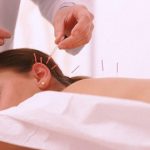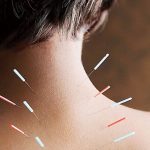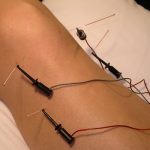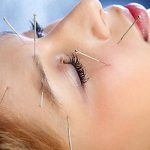Acupuncture is an ancient Chinese form of medicine which has been used in China for over 3000 years. It is practised and its effectiveness is now accepted in many countries around the world including New Zealand.
Rigorous scientific research has confirmed that acupuncture promotes the production of natural healing substances to relieve pain and relax muscles. It helps to regulate nerve transmission, enhance the immune system, regulate hormones and blood flow, and release natural anti-inflammatory substances. Acupuncture also elevates mood.
Acupuncture aims at treating the illness and the imbalance in the body causing it thereby improving health and well-being.
Traditional Chinese Medicine (TCM) describes pathways of energy/Qi flowing through the body, carrying nourishment and information to all tissues and organs. Disease occurs when some factor disrupts the normal flow of Qi. The role of the acupuncturist is to restore the normal flow and re-establish health.
With its unique system of diagnosis, an acupuncturist will ask not only details of the immediate problem, but also ask a range of questions in order to get a deeper understanding of the patients health.
A patients tongue and pulse can give the practitioner vital clues about their underling health, even before an illness has presented itself physically and help the practitioner choose the most appropriate points to use.
In this way acupuncture can be successfully used as a preventative medicine and bring positive benefits as a regular tonic, stimulating the immune system and helping de-stress and relax the body. We often suggest to clients they consider a wellness treatment every four to six weeks for this purpose.
[[[Acupuncture]]]
What is acupuncture? Does it hurt?
Acupuncture is the insertion of fine, sterile needles at specific points to regulate the body’s energy flow and to treat a wide variety of ailments. Acupuncture and herbal medicine form the cornerstones of Traditional Chinese Medicine, which has been practiced for over 2000 years. Acupuncture is based on the theory that the body’s vital energy, or Qi, sustains vitality. (‘Qi’ is a medical, not spiritual term, useful for diagnosis and treatment.) If this energy flow is disrupted, a person will experience pain or disease.
Acupuncture needles are solid (as opposed to the hollow-bore needles used for injections), made of stainless steel, and extremely flexible. Their tiny diameter and pine-needle shape allow them to be inserted quickly and painlessly just a few millimeters (deeper in fleshier areas). Most people experience a profound relaxation during treatments.
Modern research has shown that acupuncture works with the central nervous system to stimulate the release of endorphins, improve circulation, and enhance immune function. Many well-designed studies are going on to prove the effectiveness of acupuncture.
What can acupuncture treat?
TCM practitioner views disease as stemming from an imbalance affecting the whole of the body rather than a separate, distinct pathogen to be cut out, irradiated, or bombarded with chemicals that oftentimes carry serious side effects. This “holistic” approach allows the TCM practitioner to treat both the “branch” (the physical manifestations of the disease) while also addressing “root” of the disorder (the imbalance that gave rise to the disease in the first place), simultaneously working to treat the disease and prevent its recurrence.
We commonly treat stress, anxiety and depression, headaches and migraines, PMS and menstrual disorders, digestive disturbances, urinary difficulty, fertility problems, all sorts of bodily aches and pains, among many other symptoms and ailments.
How long will my treatment take?
It varies with each patient. Acute conditions tend to respond well and quickly to prompt treatment, while chronic or longer-term may take longer to resolve.
Is acupuncture safe?
Acupuncture is extremely safe. Serious side effects are very rare—less than one incident per 10,000 treatments. The most common side effect of acupuncture, which itself is not terribly common, is minor bruising at the insertion site. We always use sterile, single-use needles to minimize the risk of infection.




